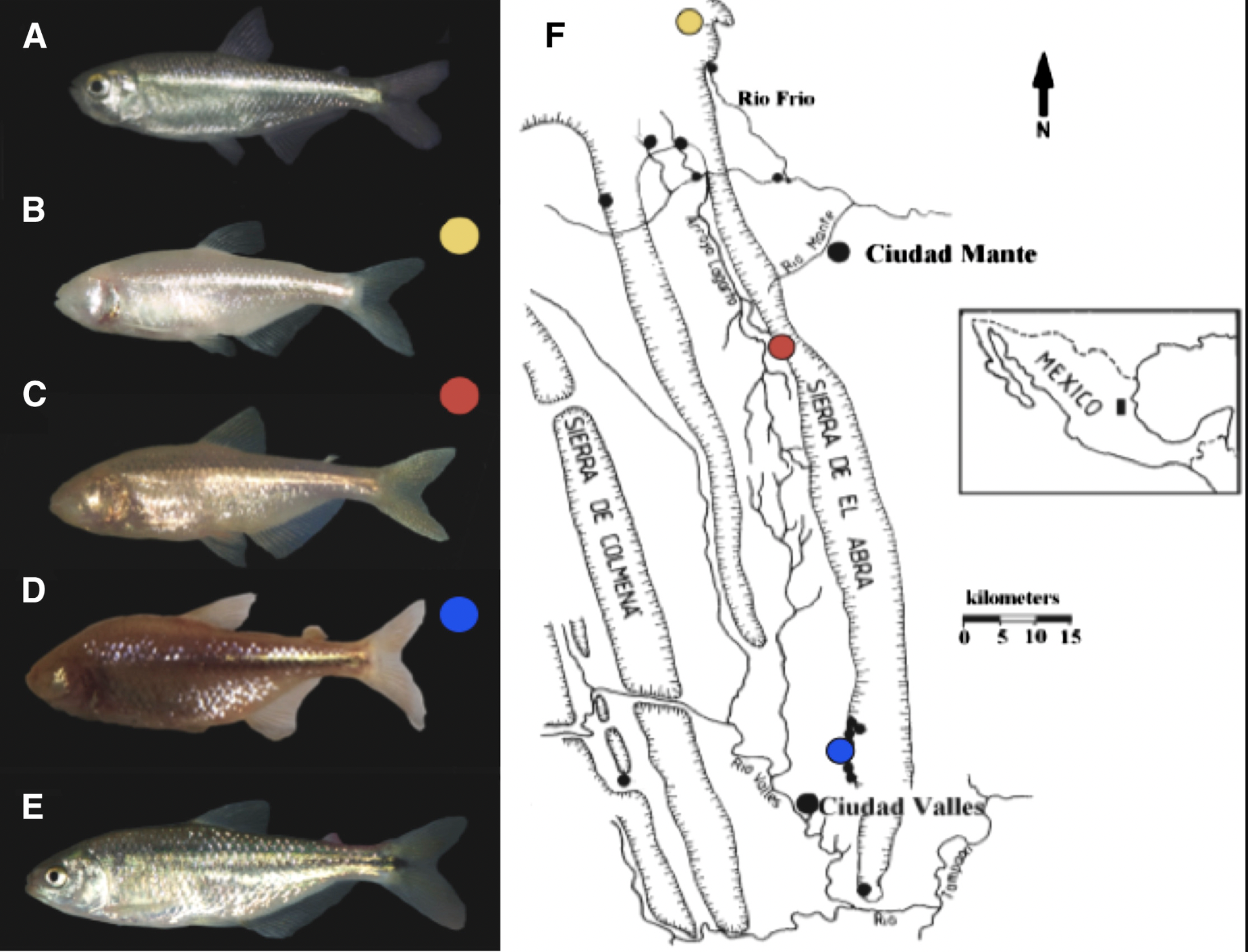Unit 7 FRQ (Evolutionary Advantages)
2 min read•june 18, 2024
AP Biology 🧬
358 resourcesSee Units
AP Bio Free Response Question for Evolutionary Advantages
👋 Welcome to the AP Bio Unit 7 FRQ (Evolutionary Advantages). These are longer questions, so grab some paper and a pencil, or open up a blank page on your computer.
⚠️ (Unfortunately, we don't have an Answers Guide for this question, but it can give you an idea of how an FRQ for Unit 7 might look on the exam.)
⏱ The AP Biology exam has 6 free-response questions, and you will be given 90 minutes to complete the FRQ section. (This means you should give yourself ~15 minutes to go through each practice FRQ.)
- 🤔 Need a quick refresher of the unit as a whole? Check out the Unit 7 Overview
- 😩 Getting stumped halfway through answering? Look through all of the available Unit 7 resources
Setup
The Mexican tetra or Astyanax mexicanus is a freshwater fish living primarily along the eastern coasts of Mexico. The species is famous for its blind form, which exists in caves and low light areas. The blindness is the result of having no eyeballs. Blind cavefish morphologically resemble their surface counterparts except they have no eyes and significantly lighter pigmentation. In fact, there are five different subtypes of Mexican tetras with various phenotypes. Figure 1 details these fish and their respective regions.
Figure 1

Image Source: Duboue, et al. (2011)
Questions
(a) Propose an evolutionary advantage of the blind cavefish over the surface form in its respective environment.
(b) Identify the nonselective process that caused different groups of the fish to differentiate rapidly and with major phenotypic differences.
(c) For Group B fish to lose their eyes, they must have suffered a mutation. Discuss what would have had happened if that mutation had occurred in a school of fish at the surface rather than a school of fish residing in low-light caves.
(d) Draw a cladogram demonstrating the relationships between the five types of Mexican tetras. For the purposes of this FRQ, draw it on a separate sheet of paper, take a picture, and insert it into this document.
(e) In the original population of Mexican tetras, scale color may be light or dark (d or D, respectively). Scale color is the result of complete dominance. If 15% of Mexican tetras have light scales, calculate the frequencies of the dominant and recessive alleles.
Browse Study Guides By Unit
🧪Unit 1 – Chemistry of Life
🧬Unit 2 – Cell Structure & Function
🔋Unit 3 – Cellular Energetics
🦠Unit 4 – Cell Communication & Cell Cycle
👪Unit 5 – Heredity
👻Unit 6 – Gene Expression & Regulation
🦍Unit 7 – Natural Selection
🌲Unit 8 – Ecology
📚Study Tools
🧐Exam Skills

Fiveable
Resources
© 2025 Fiveable Inc. All rights reserved.